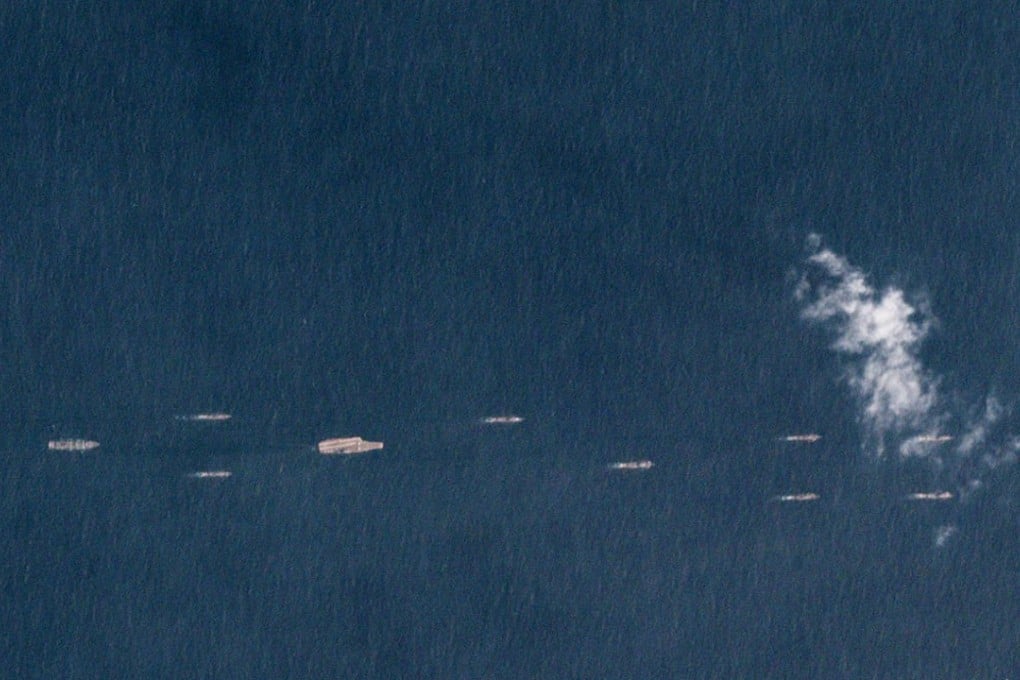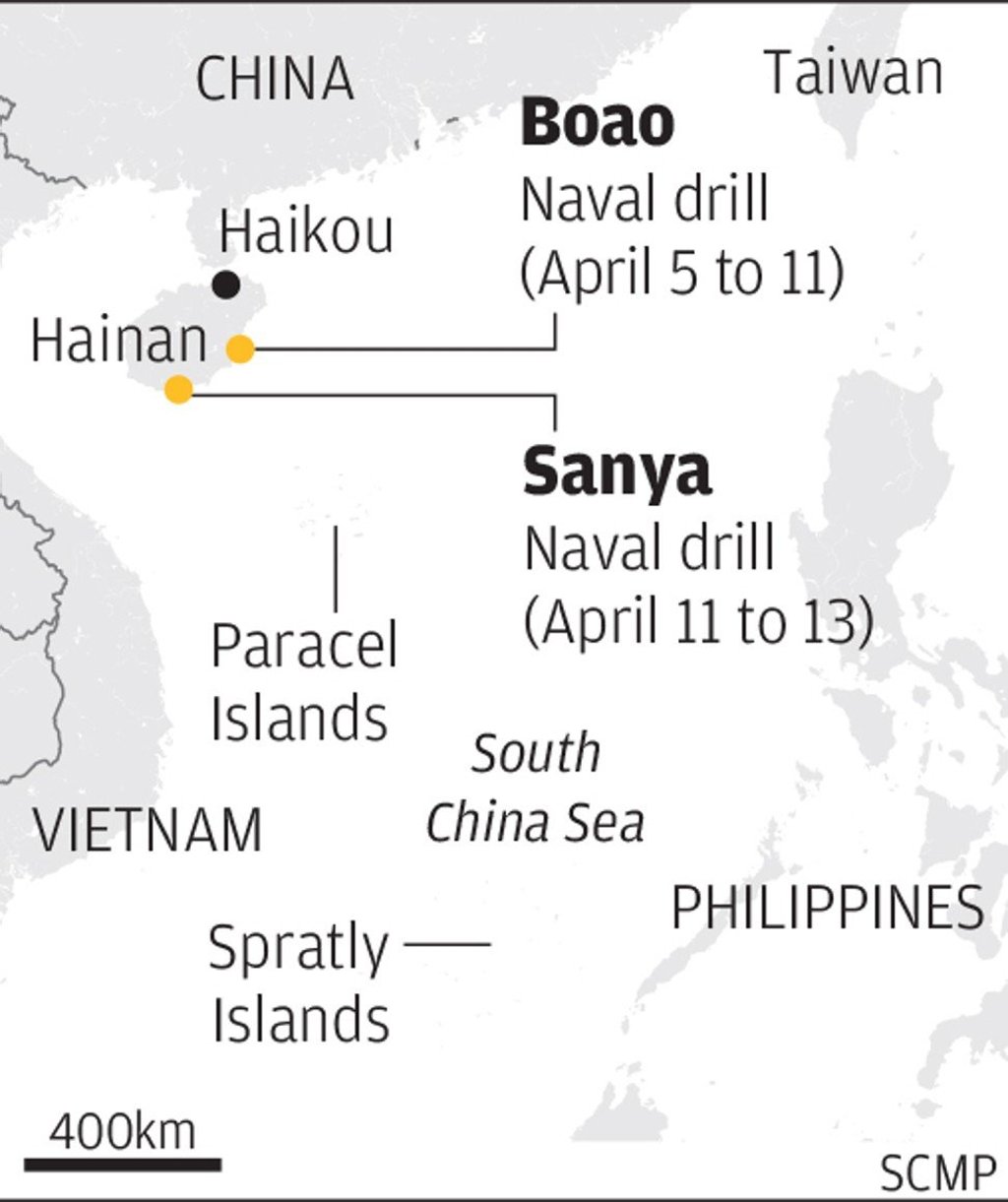Chinese navy stages double show of strength as US strike group drills in disputed South China Sea
PLA puts aircraft carrier and submarines through their paces as USS Theodore Roosevelt passes through contested waterway

The Chinese navy began a three-day drill yesterday near its main submarine base as another exercise finished nearby in what analysts described as a message to the United States that it was capable of defending its core interests.
The dual show of strength came as an American strike group led by the aircraft carrier USS Theodore Roosevelt conducted its own exercises in the contested waters of the South China Sea.
The latest Chinese drill began in the waters off Sanya, Asia’s largest submarine base, on the south coast of Hainan province.
China’s mystery ‘military base’ in Vanuatu could be a space tracking station
It overlapped with an unprecedented week-long series of live-fire drills involving the aircraft carrier Liaoning to the east of the island, near the venue for the Boao Forum for Asia.
The area has several underwater channels and straits, which could allow China’s submarine fleet to break through the United States’ first and second island-chain blockades that are designed to confine China’s maritime forces.
Beijing wants to tell Washington that the Chinese navy is capable of defending the waters relating to its core national interests
Beijing-based naval expert Li Jie said China was sending a message to the United States that its armed forces were ready to deal with any security challenges.
